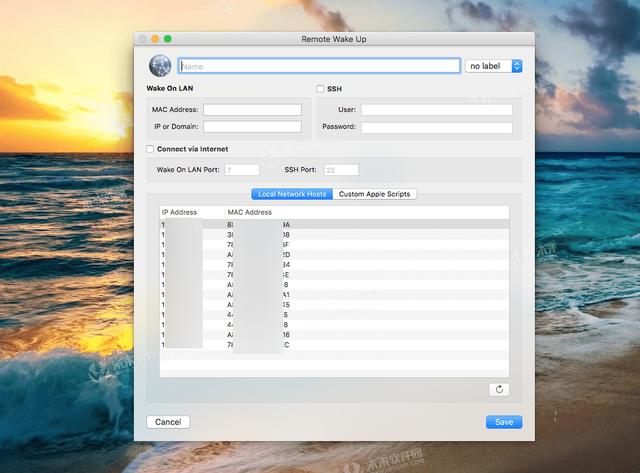

- REMOTE WAKE UP UBUNTU WIFI HOW TO
- REMOTE WAKE UP UBUNTU WIFI INSTALL
- REMOTE WAKE UP UBUNTU WIFI FULL
- REMOTE WAKE UP UBUNTU WIFI PASSWORD
On the target, using an account with sudo access (typically your main account), sudo visudo.On my system, this is /usr/sbin/pm-suspend.
REMOTE WAKE UP UBUNTU WIFI FULL
First, get the full path: which pm-suspend. In this article we have explained the steps for remote wake up Ubuntu server remote. Remote server mac address should be written after wakeonlan command.

Here is it pm-suspend, use poweroff to turn off the computer. Wake up remote server using this package: focubuntu22: sudo wakeonlan 30:5a:3a:0d:ac:0d Sending magic packet to 255.255.255.255:9 with 30:5a:3a:0d:ac:0d. On the target, we need to let the hass user execute the program needed to suspend/shut down the target computer.
REMOTE WAKE UP UBUNTU WIFI PASSWORD
On the server, verify that you can reach your target machine without password by ssh TARGET.Enter the password you created in step 3. On the server, transfer your public SSH key by ssh-copy-id where TARGET is your target machine’s name or IP address.If you do, you can leave out in the SSH commands below. It’s recommended using the same user name as on the server. Just press enter on all questions except password. On the target, create a new account that Home Assistant can ssh into: sudo adduser hass.

On the server, create SSH keys by running ssh-keygen.On the server, log in as the user account Home Assistant is running under.Suggested recipe for letting the turn_off script suspend a Linux computer (the target)įrom Home Assistant running on another Linux computer (the server).
REMOTE WAKE UP UBUNTU WIFI HOW TO
Here are some real-life examples of how to use the turn_off variable. You can of course also use a graphical tool or an app to send a WOL magic packet.The port to send the magic packet to.
REMOTE WAKE UP UBUNTU WIFI INSTALL
Link/ether 70:85:xx:xx:xx:xx brd ff:ff:ff:ff:ff:ff Send a Wake on LAN magic packetĪny other computer (or even mobile phone) in the same network can now send such a magic packet to wake up and start up the computer.įrom another Linux machine you can use the wakeonlan command by using the MAC address noted down ~ $ sudo apt-get install ~ $ wakeonlan 70:85:xx:xx:xx:xx Now run the command ip a and note down the physical (MAC) address of the ~ $ ip a | grep ether Verify that the setting was ~ $ sudo ethtool enp3s0 | grep Wake To enable Wake-on on this card, set the option to "g" (Wake on ~ $ sudo ethtool -s enp3s0 wol g Wake On Lan is a protocol with which it will be possible to turn on a computer remotely without the need to press the power button. However right now the current setting (Wake-on) is set to d (disabled). This shows what kind of Wake-on options this card supports: "pumbg". To see the Wake on LAN specific settings, ~ $ sudo ethtool enp3s0 | grep Wake Link partner advertised FEC modes: Not reported Link partner advertised auto-negotiation: Yes Link partner advertised pause frame use: Symmetric Link partner advertised link modes: 10baseT/Half 10baseT/Full Supported pause frame use: Symmetric Receive-onlyĪdvertised link modes: 10baseT/Half 10baseT/FullĪdvertised pause frame use: Symmetric Receive-only Supported link modes: 10baseT/Half 10baseT/Full The full output of ethtool run against the network interface (here enp3s0) shows the card's ~ $ sudo ethtool enp3s0 In Linux this can be achieved with the ethtool command. The network card also needs to be told that it should listen to magic packets. Then under Power Management section, please try to enable PME EVENT WAKE UP option and save the setting to. Enable Wake on LAN in Linuxīut that's not enough (yet) to accept Wake on LAN magic packets. Finally, I noticed something from router side: (BTW, whats the point if I need Ethernet wire to get my WiFi to work) If the Ethernet wire was plugged in, I. At first, please try to get into BIOS setup program. Once you've set "PCIE Devices Power On" to enabled, save the settings and exit UEFI.


 0 kommentar(er)
0 kommentar(er)
